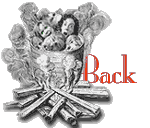
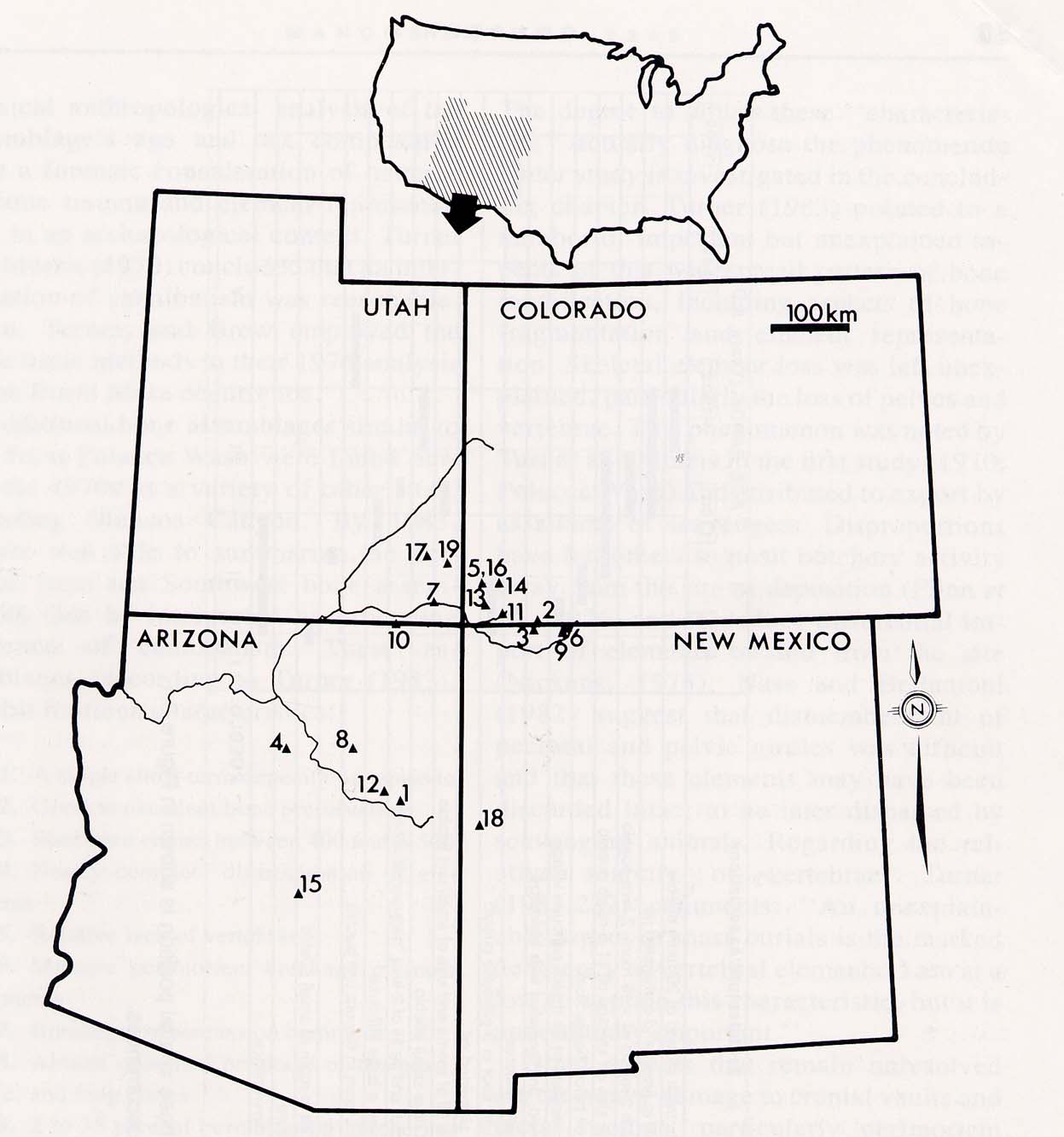 The
best evidence of prehistoric cannibalism comes from the archaeological
record of the American Southwest at sites occupied by the Anasazi people.
From the archaeological record, we know that it was practiced for about
four centuries, beginning about 900 A.D. It is believed that Southwestern
cannibalism originated in Mexico, where the practice was common and dates
back to 2,500 years. Cannibalism can be differentiated from all other forms
of bone damage and mortuary practices by distinctive features found on
human bones that are consistent with marks found on the bones of large
and small game animals that were processed for food.
The
best evidence of prehistoric cannibalism comes from the archaeological
record of the American Southwest at sites occupied by the Anasazi people.
From the archaeological record, we know that it was practiced for about
four centuries, beginning about 900 A.D. It is believed that Southwestern
cannibalism originated in Mexico, where the practice was common and dates
back to 2,500 years. Cannibalism can be differentiated from all other forms
of bone damage and mortuary practices by distinctive features found on
human bones that are consistent with marks found on the bones of large
and small game animals that were processed for food.
HUMAN DAMAGE TO BONE
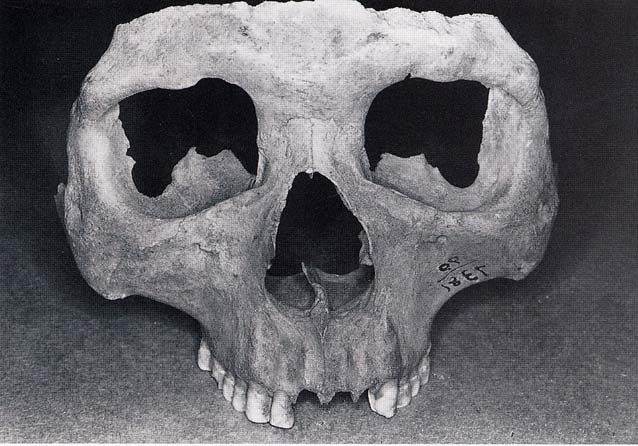
Perimortem modification of animal and human bones at this site includes three primary direct forms- breaking, cutting and burning.
Breaking
is commonly caused by impact blows, but can also be done by leveraging,
twisting or snapping. Impact breakage is a strong clue that human activity
has been involved, especially if the breakage occurs near the midshaft
of the bone. (Turner)
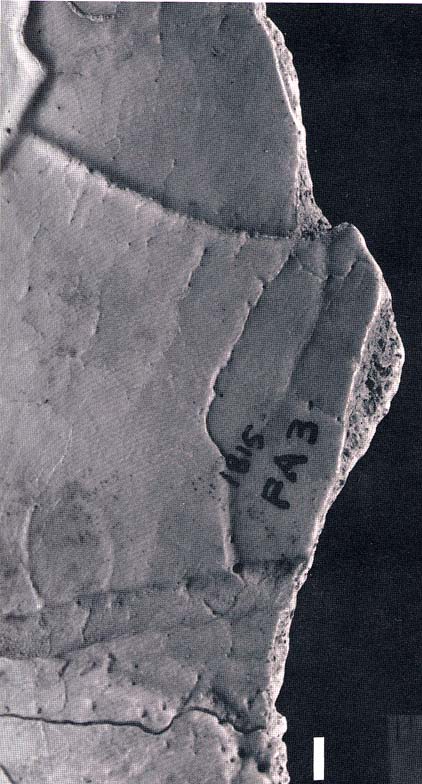 "Pot
Polish"occurs when the inner surface of a cooking vessel creates
an abrasive surface that comes in contact with the bone during cooking
to produce polish and beveling.
"Pot
Polish"occurs when the inner surface of a cooking vessel creates
an abrasive surface that comes in contact with the bone during cooking
to produce polish and beveling.
It has long been observed that human
bone thought to represent the remains of cannibalized individuals
are remarkably well preserved. One theory is that boiling expels fats from
the bone, which retards the process of disintegration.
A common debate is how to distinguish human created cut marks from marks made by other factors such as carnivore and rodent tooth scratches, root etching, abrasion, trampling marks, preparation scratches, and vascular grooves among others. Use of the scanning electron microscope has greatly aided in the discrimination between human- induced marks and other natural damage.
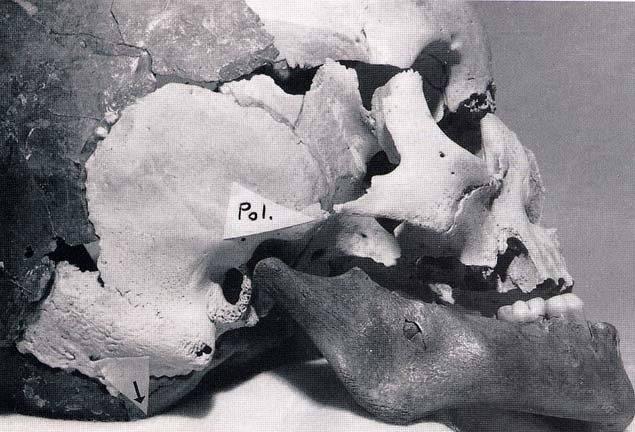 Burned
bone indicates human activity whether the burning was purposeful, such
as in cremation or cooking, or haphazard, such as when bones are discarded
into a fire pit. When bone is burned, the macroscopic alterations include
discoloration (charring and calcining), cracking and exfoliation ( White).
This skull shows burning of the back of the head and mandible, but the
face and right temporal bone show no burning, possibly because the face
and side of the head were driven internally and protected from the fire.
(photo: Turner, 1999)
Burned
bone indicates human activity whether the burning was purposeful, such
as in cremation or cooking, or haphazard, such as when bones are discarded
into a fire pit. When bone is burned, the macroscopic alterations include
discoloration (charring and calcining), cracking and exfoliation ( White).
This skull shows burning of the back of the head and mandible, but the
face and right temporal bone show no burning, possibly because the face
and side of the head were driven internally and protected from the fire.
(photo: Turner, 1999)
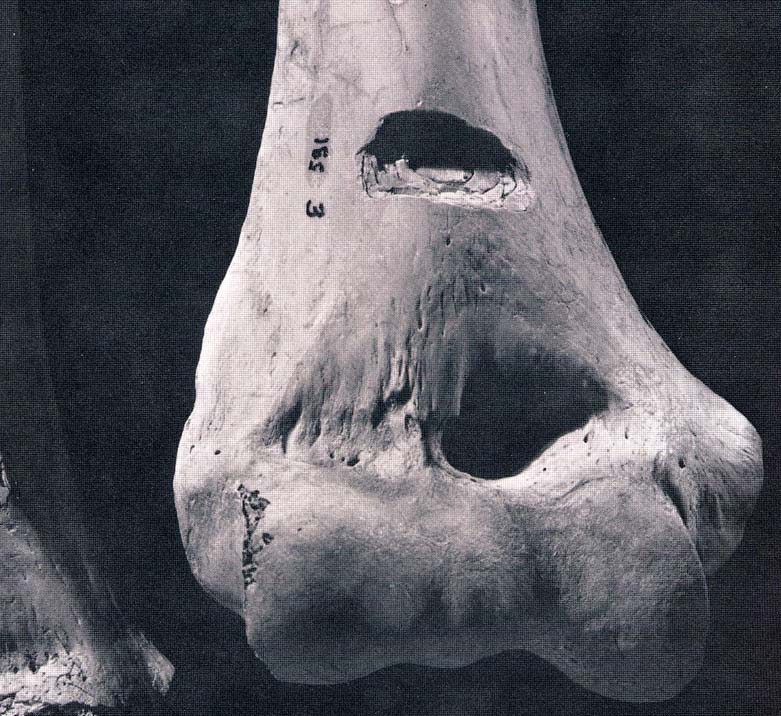 Chopmarks
are produced when a stone artifact is used to strike a bone surface with
a blow directed roughly perpendicular to the bone surface. Chopmarks are
broad and V-shaped in cross section. The humerus below shows cutmarks suitably
located for cutting the arm in half at the elbow joint. The midshaft break
appears to be post mortem due to its lack of spiraling. ( Turner, 1999)
Chopmarks
are produced when a stone artifact is used to strike a bone surface with
a blow directed roughly perpendicular to the bone surface. Chopmarks are
broad and V-shaped in cross section. The humerus below shows cutmarks suitably
located for cutting the arm in half at the elbow joint. The midshaft break
appears to be post mortem due to its lack of spiraling. ( Turner, 1999)
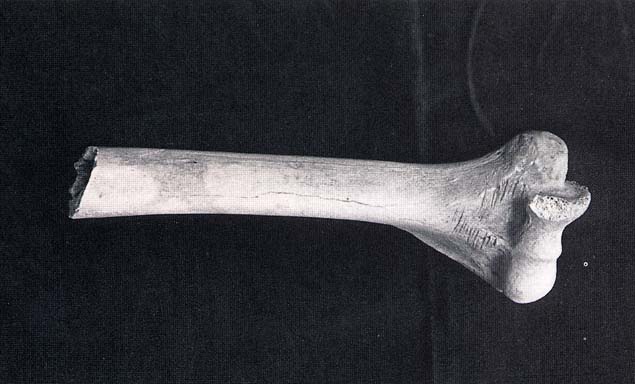
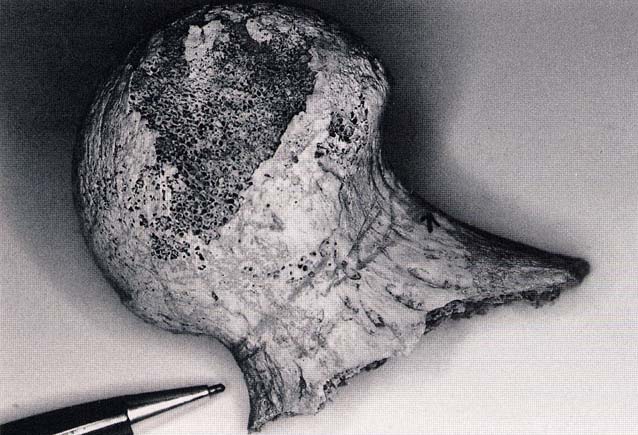 Cutmarks
are defined by multiple slicing marks across the bone produced by
a sawing motion of a blade. Stone tool cut marks on bone usually occur
near joints such as the mandible, shoulder, elbow, knee, and hip, where
dismemberment apparently took place. This femur head has cutmarks encircling
the neck where the leg was most likely cut. Similar to cutmarks are scrapemarks,
which are produced by drawing a tool across a bone surface, and results
in a dense series of usually superficial, parallel striations across a
broad area of bone. ( Turner, 1999)
Cutmarks
are defined by multiple slicing marks across the bone produced by
a sawing motion of a blade. Stone tool cut marks on bone usually occur
near joints such as the mandible, shoulder, elbow, knee, and hip, where
dismemberment apparently took place. This femur head has cutmarks encircling
the neck where the leg was most likely cut. Similar to cutmarks are scrapemarks,
which are produced by drawing a tool across a bone surface, and results
in a dense series of usually superficial, parallel striations across a
broad area of bone. ( Turner, 1999)
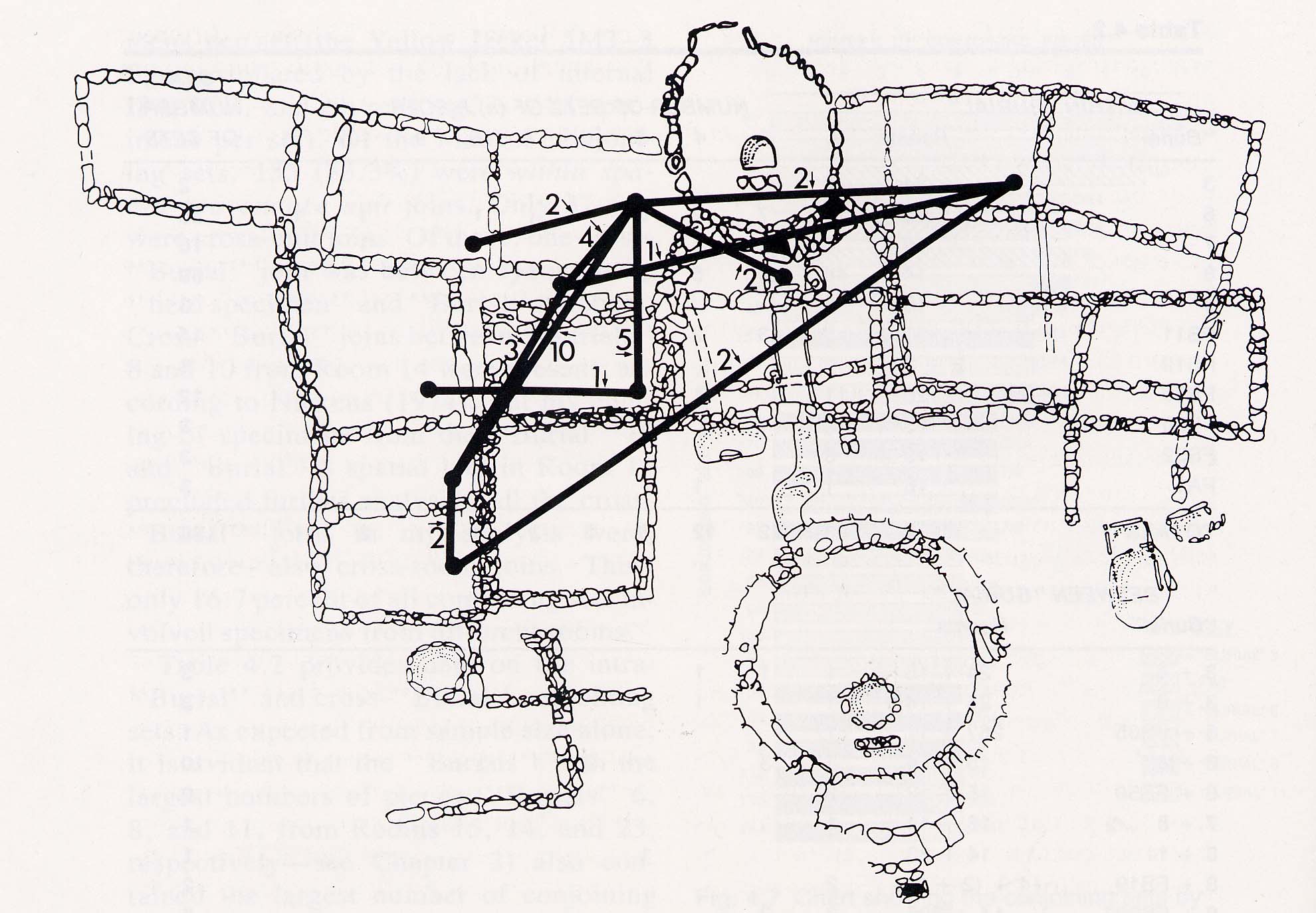 In
addition to these telltale signs of human cannibalism, archaeologists found
further evidence for cannibalism with the location of the bones found at
the site. Many bones that were believed to come from cannibalized individuals
were found spread out over the site, indicating that the bones were discarded
in different areas after dismemberment. (White, 1992)
In
addition to these telltale signs of human cannibalism, archaeologists found
further evidence for cannibalism with the location of the bones found at
the site. Many bones that were believed to come from cannibalized individuals
were found spread out over the site, indicating that the bones were discarded
in different areas after dismemberment. (White, 1992)
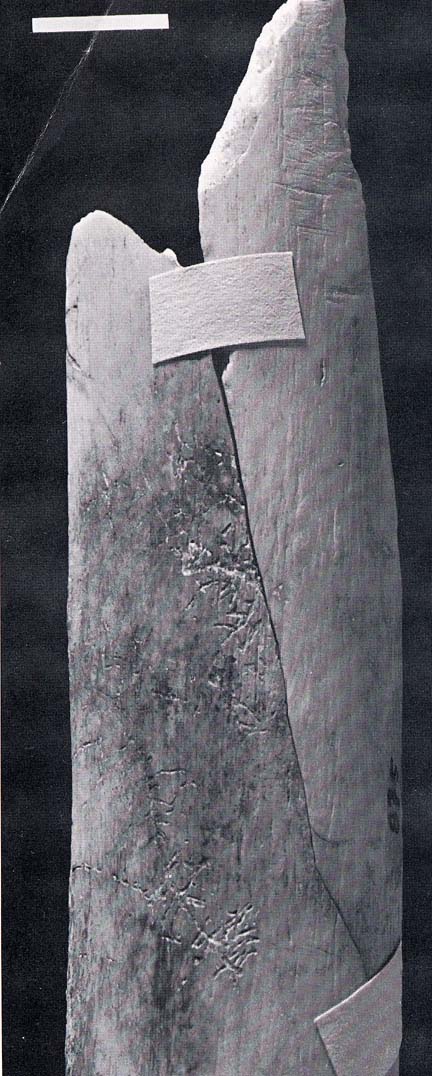 Conjoining
is a useful procedure that can tell us information about the sequence of
events that took place. In this example, the lower part of the femur has
been burned and the upper part has not. This would indicate that the burning
took place after the fracture of this bone. (Photo: White, 1992)
Conjoining
is a useful procedure that can tell us information about the sequence of
events that took place. In this example, the lower part of the femur has
been burned and the upper part has not. This would indicate that the burning
took place after the fracture of this bone. (Photo: White, 1992)
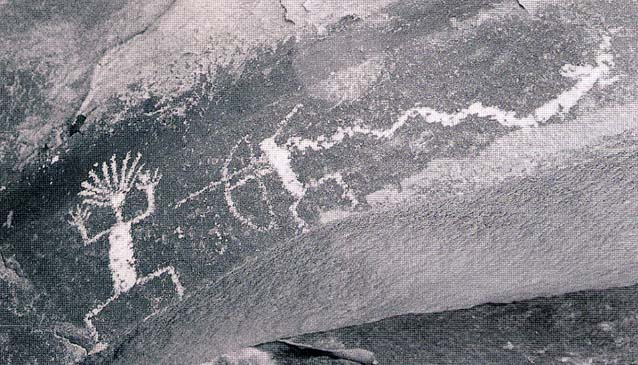
Recently an archaeological team at an
Anasazi site recovered ancient human feces, known as copralite, that contained
human myoglobin, a protein found only in skeletal and heart muscles. Human
consumption did occur, because myoglobin would not be in the feces unless
someone had eaten human muscle tissue. Traces of human myoglobin were also
detected in a cooking pot found in one of the houses at the site.
